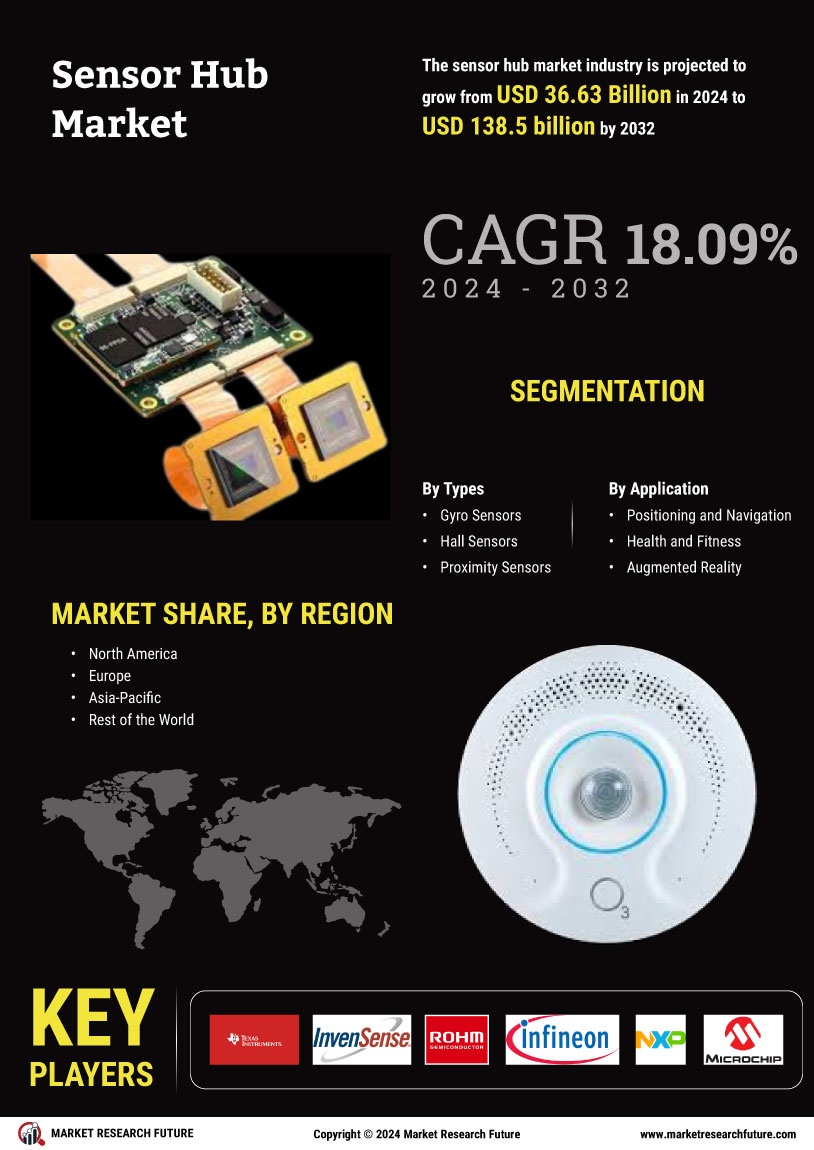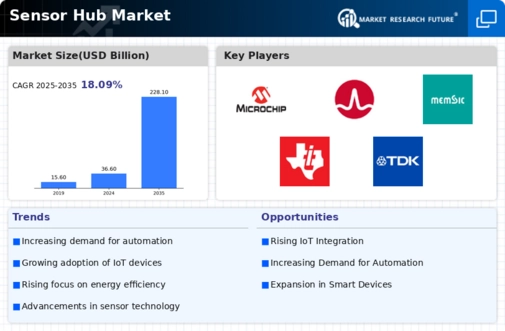Leading market players are extensively spending in R&D to increase their product lines, which will help the sensor hub market, grow even more. Market participants are also engaging in a number of strategic initiatives to grow their worldwide presence, with significant market developments including new product launches, contractual agreements, mergers and acquisitions, increased investments, and collaboration with other organizations. To expand and compete in a more competitive and expanding market climate, the sensor hub industry must provide cost-effective products.
Manufacturing locally to reduce operational costs is one of the primary business strategies employed by manufacturers in the sensor hub industry to serve customers and expand the market sector. Some of the biggest benefits to medicine in recent years have come from the sensor hub industry. Major players in the sensor hub market, such as NXP Semiconductors N.V (Netherlands), Microchip Technology Inc. (US), Intel Corporation (US), Analog Devices Inc. (US), Broadcom Limited (US), Memsic inc. (US), and others, are making investments in their research and development efforts in an effort to boost market demand.
Renesas Electronics Corporation is a Japanese electronics company. Runesasu Erekutoronikusu Kabushiki Gaisha) is a Japanese semiconductor manufacturer headquartered in Tokyo, Japan. It was founded in 2002 as Renesas Technology, a consolidated entity of Hitachi and Mitsubishi's semiconductor units excluding their dynamic random-access memory businesses,[4] with which NEC Electronics merged in 2010, resulting in a minor change in the corporate name and logo.Renesas was one of the world's six largest semiconductor businesses from the 2000s to the early 2010s.
It is the world's third-biggest automotive semiconductor manufacturer and the largest supplier of microcontrollers as of 2022.In addition, the company has a foothold in the markets for analog and mixed-signal integrated circuits, memory devices, and SoCs. June 2022 - Renesas Electronic Corporation announced the development of sensor solutions for IoT applications. Renesas is also launching the ZSSC3281 sensor signal conditioning (SSC) IC for highly accurate amplification, digitization, and sensor-specific correction of sensor data in addition to the new HS4XXX family of relative humidity and temperature sensors.
Sick AG (or SICK, as the business spells it) is a manufacturer of sensors and sensor solutions for industrial applications situated in Waldkirch (Breisgau), Germany. The company is involved in manufacturing and logistics automation, as well as process automation. The company employs around 10,344 people worldwide and expects to generate EUR 1,7 billion in sales in 2020. In August 2022 - Sick AG and Aeva, a provider of lidar, sensing, and perception systems, have committed to a multi-year collaboration to incorporate Aeva's FMCW (frequency-modulated continuous wave) 4D lidar into a number of industrial sensing applications, starting with Aeries II.
This collaboration represents a significant advancement in the advancement of high-performance and durable FMCW-based sensing across a wide range of industrial applications.
















Leave a Comment